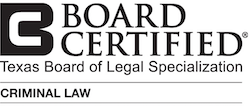The Slope Detector Does Not Always Detect The Presence of Mouth Alcohol
Infrared absorption alcohol breath test instruments use a “slope detector” which serves two primary functions: the first is to identify “alveolar air” from a flat breath alcohol concentration (BrAC) exhalation profile; the second is to identify the presence of “mouth alcohol” as a decreasing BrAC profile. Because of the normal physiological properties of the lungs, neither of these purposes is accomplished by the slope detectors as designed for breath test units (BTU) used in law enforcement. This study was undertaken to test the hypothesis that the second purpose of the slope detector does not work when alcohol is present in the blood stream as well as the mouth. The data show that the slope detector does not adequately distinguish mouth alcohol when alcohol is present in both the mouth and the blood stream.
INTRODUCTION
The alcohol breath test is an indirect means of estimating the blood alcohol concentration (BAC). The most important assumption is that after a
prolonged exhalation, the end-exhaled breath alcohol concentration (BrAC) accurately reflects the alveolar air, and hence, BAC. Implicit in that assumption is that no alcohol has been added to the breath as it passes from the lungs to the breath-testing unit (BTU). However, if there is alcohol in the oral cavity or pharynx, it will vaporize during exhalation and add to the BrAC. The functions of the slope detector have been designed with the goal of ensuring that a valid alveolar air sample is obtained.
RESULTS
In most (but not all) cases, the swishing of alcohol immediately leads to an invalid sample (indicative of a negative slope and the detection of mouth alcohol), sometimes followed by another invalid sample. After two or three tests, valid samples were obtained that exceeded the BrAC prior to the swishing. Figures 3 and 4 show consecutive breath tests from one subject after the subject swished alcohol in his/her mouth. In Figure 3, the initial breath test was an “invalid” sample, followed three minutes later by a valid test (BrAC = 0.113 gm/210 L). After an additional 6 minutes, a valid breath test of 0.042 gm/210 L was obtained.This last test was presumably close to the blood alcohol because it was similar to the BrAC prior to mouth alcohol and decreased slowly (at the approximate normal burn-off rate.
In the second sequence of tests (Figure 4), the first “invalid” test was obtained at 3:10 pm after consumption of three additional one-once shots of 86-proof scotch. If the subject had stopped exhalation at approximately 1.75 liters exhaled, the reading would have been a valid ? 0.31 gm/210 L. Three minutes later, the DM read a valid reading with BrAC = 0.149. An additional 4 minutes wait yielded a breath sample of 0.089. After an additional 9 minutes, the BrAC was 0.076, the likely correct breath sample, as it was approximately the same as the BrAC was prior to the mouth alcohol tests. Further results from the other six subjects: three tested with the Intoxilyzer and three tested with the DataMaster are shown in Table 1. After the BrAC tests had stabilized (indicating alcohol absorption has been completed), each subject swished approximately 0.1 oz of alcohol and then took breath samples at two- minute intervals. In all cases there were valid breath samples that exceeded the pre-mouth-alcohol BrAC. In all cases but one the test following the mouth alcohol was an invalid sample. In the first subject using the DataMaster, the first sample registered a valid 0.164, which was markedly greater than the baseline 0.064. On average the first valid sample read 0.098 ± 0.071 gm/210 L (mean ± SD) greater than the baseline. The valid breath samples did not return to the baseline until 15 minutes had passed.
DISCUSSION
Using normal procedures for testing the slope detector, the operator willswish some mouthwash (with alcohol) and then exhale into the breath testmachine. These operators do not have alcohol in their blood stream. Underthese conditions, exhaled BrAC will increase to a maximum and then decreaseresulting in an “invalid sample”. In a limited study using only three subjects, Evans 12 showed that apositive BrAC test can be obtained in subjects with no blood alcohol within 10minutes of taking in mouth alcohol. This author did not study subjects withalcohol in their blood stream. Wigmore 13 studied nine female and twenty-onemale alcohol-free subjects after introducing 10 ml of diluted alcohol (20% v/valcohol) into their mouths. The subjects either rinsed the alcohol for 10s and then expectorated or immediately swallowed. Each subject then provided breathsamples into an Intoxilyzer 5000 at 5 and 10 min post-administration for bothconditions. They found valid positive tests in 28 out of 120 tests. They foundthat the mouth alcohol effect was greater for rinsing than for swallowing alcohol.This study is interesting in that the subjects had only minimal blood alcohollevels.Gastroesophageal reflux disease (GERD) is a condition that may causemouth alcohol due to the reverse flux of stomach contents into the nasopharynx resulting in the possibility of mouth alcohol. Kachagias 14 studied 5 female and 5 male subjects with GERD asking whether elevated breath alcohol tests mightresult. Two of the four individual subject data shown indicated the possibility of an elevated BrAC. The authors concluded: “the risk of alcohol erupting from thestomach into the mouth owing to gastric reflux and falsely increasing the result ofan evidential breath alcohol test is highly improbable. However, these authorsstudied only a very limited number of subjects leaving open the possibility thatGERD may play a role in other subjects. In a related study, Staubus 15 showedthat burping with alcohol in the stomach provided a falsely high BrAC of up to0.046 g/210 L.Generally, it is thought that mouth alcohol will be rinsed away bysaliva within 15 minutes in some states and 20 minutes on other states. Thusstates will require either a 15-minute or 20-minute waiting period to precede abreath alcohol test. A concern has been those subjects with dentures,particularly using adhesives. Harding 16 studied 25 subjects who used dentureswith and without their dentures for the retention time of mouth alcohol. Theseauthors found that mouth alcohol lasted more than 15 minutes in 5 out of 25 subjects without dentures and 5 out of 25 subjects with dentures and adhesives.They also found that mouth alcohol lasted more than 20 minutes in no subjectswithout dentures and 2 out or 25 subjects with dentures using adhesives. A case study by Trafford 17 indicated that there was a possibility of dentures contributingto a falsely high breath test.10In addition, a study by Logan et al 18 showed that medications in asthmainhalers were eliminated with a 15 minute observation period and hence, asthmainhalers will not contribute to mouth alcohol if taken more than 15 minutes beforea breath test.Because of the inadequacies of the slope detector, extra precaution mustbe used to be certain that mouth alcohol is not contributing to a breath test. Thepractice in many states is to perform two breath tests within a short time (2-5minutes). If the two breath tests are identical to each other in magnitude, then itis unlikely that mouth alcohol is present.Some states take only one breath test. This is dangerous because therole of mouth alcohol would be overlooked. In Alaska, only one breath test isused. The practice is to not require an additional 15-minute waiting period afterobtaining an “invalid sample”. Thus, as seen in Figures 3 and 4, it is likely thatthe following valid breath test will be greater than the correct BrAC if it is administered before an additional 15 minutes waiting period is completed.In our experiments, we also noted a propensity for an erroneous high BrAC test during the absorption phase. This may be due to the potential for mouth alcohol to be missed by the slope detector immediately after consumptionof alcohol. Jones 19 has observed that BrAC is sometimes greater than the venous blood sample BAC within the first 90 minutes (the absorptive phase)following ingestion.
In summary, this study has shown that mouth alcohol may play a role inmany breath tests even though a BTU uses a slope detector. While slopedetectors are present in all modern infrared absorption BTUs, they are not usefulin many cases. This problem with the slope detector argues quite strongly thatduplicate breath tests with 15 min between tests should be used in all cases inorder to minimize the chance of mouth alcohol influencing the breath test result.






















